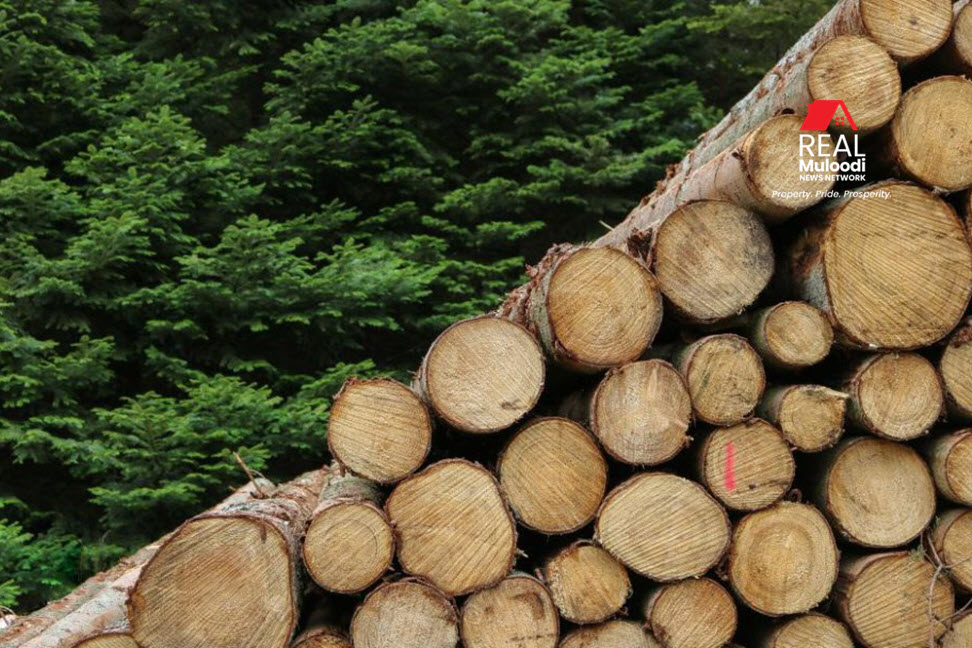UGANDA, Kampala | Real Muloodi News | Timber is a common product used for construction all over the world. Engineers and architectural designers relish the strength, stability, and design flexibility timber products have to offer.
According to Mr Hillary Muwonge, an architectural engineer in Maya, “Timber in construction not only gives the house a touch of beauty, but also strength – especially in the house’s roofing.”
This article will explore the the qualities of timber available, and what to consider before buying it.
Types of Timber:
Hardwood
- Mahogany: Durable, doesn’t swell or shrink and is commonly used for furniture
- Walnut: Similar in strength to Mahogany
- Oak: Strong with limited shrinkage, it is widely used for floors
- Cherry: Shrink resistant, ages well good for cabinets
- Maple: Strong with little shrinkage
- Other hardwoods: Rosewood, Teak and Sheesham
Softwood
- Pine: No shrinkage, swelling or moulding. Pine is commonly used in constructing houses.
- Hemlock, Spruce and Fir: Low resistance to decay, used to build doors, windows, boards, floors and frames.
- Redwood and Cedar: Resistance to rot, suitable for furniture and fencing.
Mr Yunus Ssemambo, a dealer in Ndeeba explains, “If you know that you are buying timber which is meant to be used for the roof of the house, it’s important that the timber is soft such as pine, cider, fir and spruce because these types of wood easily allow nails to penetrate them unlike the hard wood.”
Other types of wood include plywood, chipboard and MDF boards, used for interior items such as kitchen cabinetry.
What to Know Before Buying Timber:
- The purpose: Is it intended for the interior, or exterior uses? MDF boards are not well suited for exterior uses, whereas pine is great for roofing.
- Ensure the timber is well dried. If it is moist, it will crack, especially in construction.
- Better to get professional advice. If possible go with your engineer for the purchase.
- Consider its length and thickness.
- Buy matching timber sizes. If the sizes don’t add up, it can hinder the construction and design of a house.
Deborah Buzaare, a timber supplier at Trust in God Quality Timber in Kyengera shares, “There are so many types of timber on the market. It is better to move with an engineer because they not only know the right sizes and lengths of the timber but can also differentiate poor quality timber from the good one,” she advises.
Daniel Bikoto from Biko Furniture Works, recommends that when it comes to roofing, use of the following sizes of timber; four by two (rafters), three by two (purlins), six by two and three by four (inches).
How Do You Differentiate Good from Bad Timber?
- Visual checks: the proper storage of the timber and its visibility defects (mainly caused by termites).
- Hardness: good quality timber is hard and resists deterioration
- Strength: assess the strength it needs to withhold structural loads, withstand shocks caused by vibrations, and it shouldn’t break when bending. It is with narrow annual rings is the strongest usually.
- Elasticity: enable it to regain its shape after removal of loads
- Durability: resistance to fungi and worms
- Defects: ensure the timber is free from sap, dead knots and other similar defects.
- Appearance: fresh-cut pieces are shiny and have a sweet smell. If the colour is dark, it usually means it’s good. If it is light, it implies a weakness in strength.
- Weight: the heavier it is, the stronger. Light wood is weaker.
- Shape: ensure the timber keeps its shape during seasoning.
- Workability: ensure it is well seasoned. The teeth of the saw shouldn’t get clogged during sawing.
Finally, it is vital to maintain your timber as it is prone to moulding, rot, water damage and attracting termites. Before using it, be sure to treat it and apply products designed to cover or soak it into the wood. These products include paint, stain oil or varnish, depending on your desired look. Used vehicle oil can also be used, and is more cost-effective.
READ MORE LIKE THIS:
https://realmuloodi.co.ug/which-is-better-for-you-home-concrete-slabs-or-concrete-pavers/



